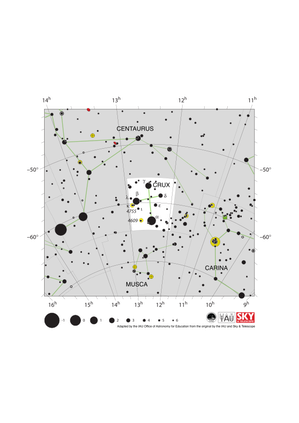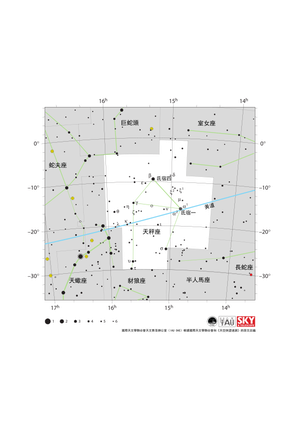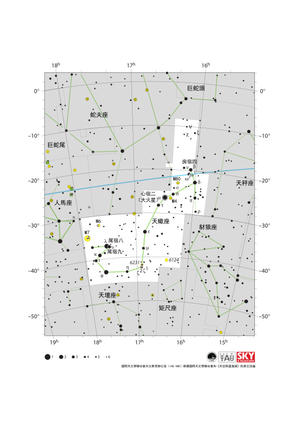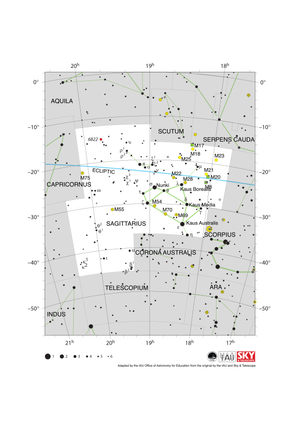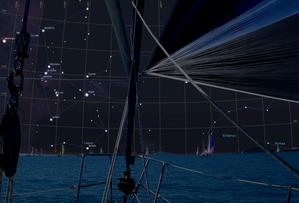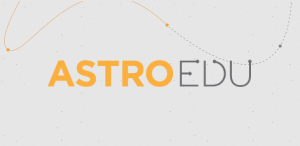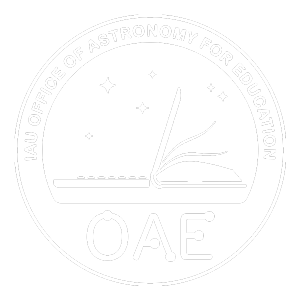Glossary term: 天球坐標
Description: 從地球上看,我們認為天體位於一個球殼上,傳統上稱為天球。我們可以用兩個數字來描述該球殼上的任何位置。將兩個這樣的數字映射到天球上某一位置的任何一種方法都稱為天球坐標系,而這些數字則稱為天體的(天球)坐標。
在地球表面,我們使用地理經緯度來達到同樣的目的。事實上,定義天體坐標的一種方法就是從地理經緯度中衍生出來的:天空中直接位於地球赤道正上方的那些點,構成了天赤道;而位於地球表面上某一位置正上方的點,則以類似於其基準點經緯度的方式確定坐標。
天文學家使用不同種類的坐標系,而其中的一種坐標系考慮到了地球每天的自轉,因此其坐標是通用的,在地球上任何地方都可以使用。這也確保了恆星等天體的坐標不會在數天、數月或數年的時間尺度內發生顯著變化。
Related Terms:
See this term in other languages
Term and definition status: The original definition of this term in English have been approved by a research astronomer and a teacher The translation of this term and its definition is still awaiting approval
This is an automated transliteration of the simplified Chinese translation of this term
The OAE Multilingual Glossary is a project of the IAU Office of Astronomy for Education (OAE) in collaboration with the IAU Office of Astronomy Outreach (OAO). The terms and definitions were chosen, written and reviewed by a collective effort from the OAE, the OAE Centers and Nodes, the OAE National Astronomy Education Coordinators (NAECs) and other volunteers. You can find a full list of credits here. All glossary terms and their definitions are released under a Creative Commons CC BY-4.0 license and should be credited to "IAU OAE".
If you notice a factual or translation error in this glossary term or definition then please get in touch.
Related Diagrams
Crux Constellation Map
Credit: Adapted by the IAU Office of Astronomy for Education from the original by IAU/Sky & Telescope.
License: CC-BY-4.0 Creative Commons 姓名標示 4.0 國際 (CC BY 4.0) icons
獵戶座星圖
Credit: 由國際天文學聯合會天文教育辦公室根據國際天文學聯合會/《天空與望遠鏡》的原文改編
License: CC-BY-4.0 Creative Commons 姓名標示 4.0 國際 (CC BY 4.0) icons
天秤座星圖
Credit: 國際天文學聯合會天文教育辦公室(IAU OAE)根據國際天文學聯合會和《天空與望遠鏡》的原文改編
License: CC-BY-4.0 Creative Commons 姓名標示 4.0 國際 (CC BY 4.0) icons
天蠍座星圖
Credit: 國際天文學聯合會天文教育辦公室(IAU OAE)根據國際天文學聯合會和《天空與望遠鏡》的原文改編
License: CC-BY-4.0 Creative Commons 姓名標示 4.0 國際 (CC BY 4.0) icons
Sagittarius Constellation Map
Credit: Adapted by the IAU Office of Astronomy for Education from the original by IAU/Sky & Telescope
License: CC-BY-4.0 Creative Commons 姓名標示 4.0 國際 (CC BY 4.0) icons
Related Activities
Navigation in the Ancient Mediterranean and Beyond
astroEDU educational activity (links to astroEDU website) Description: Learn the ancient skill of Celestial Navigation
License: CC-BY-4.0 Creative Commons 姓名標示 4.0 國際 (CC BY 4.0) icons
Tags:
History
, Geography
, Celestial navigation
Age Ranges:
14-16
, 16-19
Education Level:
Middle School
, Secondary
Areas of Learning:
Discussion Groups
, Modelling
, Social Research
Costs:
Low Cost
Duration:
1 hour 30 mins
Group Size:
Group
Skills:
Analysing and interpreting data
, Asking questions
, Communicating information
, Developing and using models
, Planning and carrying out investigations
, Using mathematics and computational thinking
